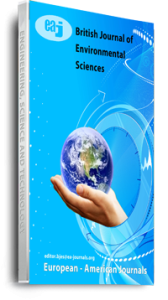The study is necessitated by the recent move by Imo State government of Nigeria to raise Okigwe town to urban status. Ajali Formation being the prominent geological terrain in Okigwe area, most structures would be erected on the soil derived from it. The parameter measured include grain size, atterberg limits, and compaction, shear strength, permeability and porosity as well as bulk density. The result shows that the soil underlain by Ajali Formation within Okigwe area is sandy silt with low clay content and has plasticity index, bulk density, porosity and permeability values of 9.65%, 2.06%,kg/m3, 0.45 and 0.35cm/s respectively.
The value for the optimum moisture content (OMC) maximum dry density(MDD) shear strength, angle of internal friction are 13.5%, 2.06kg/m3, 106.86KN/M2 and 28.4o. These values indicate that the soil derived from Maastrichtian Ajali Formation within Okigwe area of south eastern Nigeria is of high strength, porous and permeable and can be used as a recharge site for regional aquifer, but cannot be used as a waste disposal area or for road construction. The soil due to its low plasticity index with no swelling characteristics and high shear strength is a good site for building foundations, but cannot be used in dam construction. It is ideal for projects requiring good drainage and embankments. However, for the soil to be used in any engineering construction works, it has to be compacted to its maximum dry density value of 2.06kg/m3 within the range of optimum moisture content of 13.5% as to achieve maximum strength.
Keywords: Ajali Formation, Engineering Properties, Okigwe, SE Nigeria, Soil, Uses

